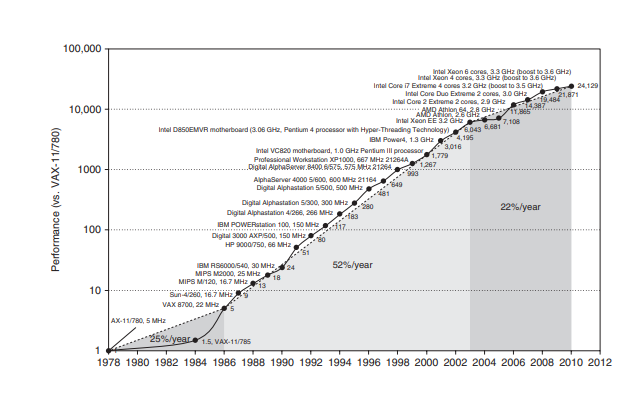History of Computer Architecture - 1980-Now
Development of computers are done in two factors: 1) Improvement in computer building technology and 2) Improvement in Computer Design
1. Early years - 25 yrs
- Both (technology + design) contributed well - performance increase of 25%/yr
- Invention of Microprocessors made CPUs able to carry more transistors in smaller sizes, led to more transistor capacity and better architectures possible -> 25%/yr to 35%/yr

2. RISC
- Virtual elimination of assembly programming: reduced object-code compatibility
- Standardized, vendor-independent OS(Unix, Linux) easier implementation of new architecture.
These two factors led to development of RISC(Reduced Instruction Set Computer) 1) Instruction level parallelism - pipelining & multiple instruction issue) 2) caches
RISC was so powerful that the former architectures had to adapt or disappear Intel adapted by internally transforming 80x86 instructions to RISC-like instructions - hardware overload became negligible as transistor counts increase drastically However, power-critical hardwares like cell phones needed a more efficient architecture - ARM - a 100% RISC architecture
Productivity over performance
- 25000-fold performance improvement since 1978 meant it was ok to sacrifice some performance for readability in most applications.
- unmanaged(C++ and C) -> managed(Java, C#) and scripting languages(Python, Ruby)
3. End of Renaissance 2003
1) Maximum processor power dissipation of air-cooled chips 2) Reached max instruction-level parallelism to exploit
- Uniprocessor days were over - time to put multiple processors in a chip this led to shift from instruction level parallelism to 1) DLP(data-level parallelism) 2) TLP(thread-level parallelism) 3) RLP(request-level parallelism) which all are explicitly parallel - it is the application’s job to exploit it